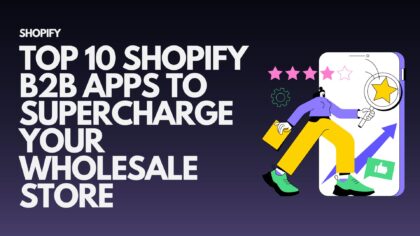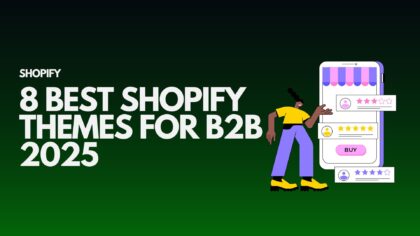With the coronavirus forcing consumers into self-quarantines, there have been signs of significant changes in consumer behavior. Consumers are starting to worry about public places even for daily necessities like groceries, providing an opportunity for the eCommerce business to thrive over the next few months – as published on Forbes.
But amidst these crazy times, endless searches and ever-changing market trends, some stores are seeing a spike in their sales and some are hitting a new low. So how can Shopify stores ensure their brands and their sales don’t take as bad a hit and at least sustain?
We spoke to a few Shopify and Shopify Plus store owners and Shopify experts to understand the impact of COVID-19 on online businesses and how to sail through times with strategic Shopify marketing.
Your contingency plan: Must-have Shopify marketing strategies
1. Use customer segments to know who your shoppers are
Right now, it’s really important to identify who your customers are and who you can re-engage to drive repeat purchases. This is step one to sustaining the downsides of the coronavirus outbreak as making impulse purchases might take shoppers to other brands, and you don’t want them walking away to a competitor.
With apps like RevTap, you can use your store and marketing data to create customer segments based on purchase behavior and their last interaction with the brand. The customer segments help you identify who your active customers are, who your loyal and VIP customers are, who made purchases the most when you had similar discounts going on, and more.
With segments clearly laid out, you can personalize the marketing and advertising campaigns in the coming months to keep your store sales afloat.

2. Continue running social media and search ad campaigns
The current frenzy has caused customer acquisition costs to drop across social media and search engines. But we also saw a lot of Shopify stores pausing their ad campaigns instead of leveraging this drop to drive more traffic to their store to increase sales.
Now that most consumers are on self-quarantine, they have a lot of time in hand. Use this change in their day-to-day schedules to promote your brand, build awareness around what you’re selling and promote the discounts you’re offering during this period.
While some shoppers are focusing on purchasing only the daily necessities, there are others who are also shopping online to pass time. People are purchasing books, indoor games, etc as well to make the most of the time at hand with their friends and family as they wait for the world to cure.
A good idea to ensure you don’t end up wasting your advertising budget is to analyze the performance of your previous campaigns. With Shopify analytics apps like RevTap, you can pull in data from the Facebook Ads Manager and Google Adwords onto one dashboard. It then creates a performance marketing report that clearly shows which of your advertisements is still getting you sales.
Double down on the campaign, pause the ones that are not getting you sales and optimize your spend in no time!
3. Clearly state the expectations to keep with your brand
These are difficult times and the consumer demand is not just changing, but also fluctuating. You might have sufficient inventory for their demand, but you might not have as efficient logistics to offer. Similarly, the coming time could see your supply chain slow down too. But that doesn’t mean you stop marketing your store.
All you need to do is be transparent with your customers. Let them know of the possible delays in order delivery or how some of their favorite products might go out of stock. They’re going through the same problems and you’ll see more support from them than you expect!
You can do this by sending out a quick email, a note on SMS or the Facebook Messenger. You can even add an extra page on your store to state how things are, how you’re handling the situation and how you’re there to help with Shopify apps like PageFly or Shogun. The simple drag and drop editors that the Shopify apps offer, will help you create a temporary page in minutes.

4. Offer volume-based discounts to encourage bulk purchases
You’ve seen it at the general stores next to you. Everyone’s trying to stock up their day-to-day necessities. To avoid having to visit such public places, they’re making bulk purchases too and the stores are offering them discounts and deals to help them make these purchases within their budgets. Why treat online shopping any differently?
With Shopify apps like Discounted Pricing, you can set up volume-based discounts on your store, in minutes. Identify the products that are currently being searched for the most or are being purchased the most.
Let shoppers know they can avail an X% discount when they buy a defined amount of products. If your store does not sell products that should be bought in bulk, you can offer an X% discount on a defined cart total, to nudge shoppers to buy more from the store. You can create an offer that best suits your promotion from the dashboard itself.
Your Shopify store’s analytics is an untapped opportunity to grow your sales. Make your data work for you. Give RevTap a spin!
We do not sell or share your information with anyone.

5. Set up back in stock alerts to re-engage customers lost to stockouts
Some of the Shopify stores we spoke to, noticed their products going out of stock really soon. But the demand for those products kept bringing traffic to their store. So do they just let shoppers walk away without even trying to convert them in the possible future?
Let shoppers landing on your Shopify store, sign up to get alerts when the products they were looking for, are restocked. They might just be willing to wait for the product to come back on your store instead of purchasing it from another one – but you got to give them that hope!

Add the option to subscribe to restocked products using the Back in Stock Shopify app. This lets the shopper subscribe to updates via email, web push notifications, Facebook Messenger and even SMS. Let them choose the channel they want to be notified on and see a lot of shoppers who are actively looking to make purchases, convert.

So whether or not you’re converting a visitor into a customer, you’re getting a subscriber you can reach out to later.
6. Send out personalized (essential) product recommendations to customers
You have new data about customers from the shoppers making a purchase from your store now. You also have data on customers who have previously made purchases from you. Now is the time to put all that data to use to keep all your shoppers – new and old, engaged, to drive more conversions and sales.
Use this customer data and purchase behavior to recommend products to your customers. This helps you personalize your emails, web push notifications, Facebook Messenger and text campaigns to suit individual needs and also add value to the shoppers, by helping them stock up on what you think they will need in the coming times.
For example, a shopper just purchased a hand sanitizer from your store. Reach out to this shopper with a follow-up campaign, recommending tissue papers and disinfectant soaps. They might not have thought of those products in a hurry, but they certainly are going to thank you for it!
Such a recommendation campaign works for stores selling food items, skincare products, health and fitness products, etc.
You can do this easily using the Wiser app for product recommendations. The app lets you display these recommendations on all the pages of your store as the shopper browses through the site, and also lets you send them to customers on email with smart integrations with email apps.

7. Keep your customers coming back with store credits
There are some consumers who are indulging in impulse buys. Then there are some that are only buying what’s important for them. But it’s important to keep all types of shoppers engaged until we sail past the COVID-19 crisis. That’s where focusing on customer engagement comes in.
Engage your existing list of customers by creating a loyalty program that encourages them to engage with your store – not necessarily, makes a purchase. For example, you could send out an email nudging the customer to drop a review on the last purchase they made from your store and offer them store credits in lieu, to encourage the next purchase.
In this case, you’re nudging the shoppers to basically interact with your store, collect credits that they can avail in the future and at the same time, you’re increasing the chances of them exploring products and discounts during their visit and considering buying them while they sit at home waiting for things to normalize. Shopify apps like Flits makes setting up store credits easy. With in-depth customer accounts, you can also keep track of all the activity a customer engages in and reward them with credits to encourage purchases.

8. Join the conversation on social groups and help consumers
Take a look at all those ‘recommendation’ requests across Facebook groups, Twitter and other online platforms. These are shoppers who are genuinely interested in making a purchase but are not sure about the product they need or the brand they should be purchasing from.
Use this time to strike a conversation with consumers. Add value to them by sharing information they need to make the right purchase to avoid wasting their resources during these tough times. Remember to not be salesy – you should be there to genuinely help them out!
If not direct sales, it will help you establish a positive brand name, helping you build a strong community of shoppers who can later be turned into customers.
Getting your store prepared for now (and after)
The above Shopify marketing strategies are those we noticed on stores and were recommended by industry experts. But before you implement them, understand the stage your business is at, the resources available to you and which of the strategies is the most applicable to help you survive these tough times.
As MarketingLand states, online shopping may benefit in the short term, Shopify merchants need to remain prepared to face possible supply chain issues and uncertain consumer demand over the next few months.
While the above channels are sure to keep your customers engaged, it is also a good idea to frequently update them about your inventory or any possible challenges that you’re facing in delivering their orders. Coronavirus and eCommerce can be complicated!
So the idea is to remain transparent and set expectations that you can keep up with, and not disappoint shoppers. After all, once we’re all out of the coronavirus outbreak, things will start normalizing again and you don’t want to start from scratch to win back that customers!
But more importantly, take good care of yourself. Here’s wishing each one of us a faster recovery from these trying times.
Struggling to make sales on your Shopify store during these tough times or need help to strategize how to keep your existing customers engaged?
Our Shopify experts would love to help!


